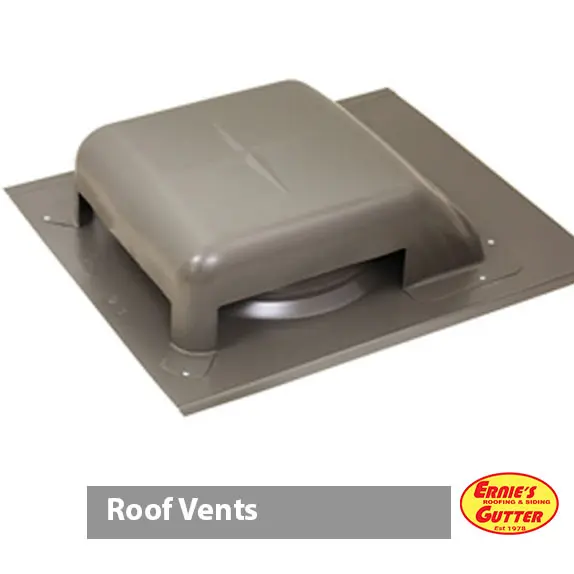Roof Vents Explained
Roof Vents Explained: A Comprehensive Guide by Ernie’s Roofing
Ventilation is a vital aspect of roofing that often goes unnoticed until problems arise. Proper roof ventilation ensures the longevity of your roof, improves energy efficiency, and protects your home from moisture-related damage. At Ernie’s Roofing, located at 1195 W Custer Pl, Denver, CO 80223, we’ve been serving Denver and surrounding areas since 1978. Whether you need advice, repairs, or a new roof installation, we’re here to help. Call us at 720-346-ROOF or visit us at https://erniesgutter.com/ to learn more about our services.
In this guide, we’ll break down the importance of roof vents, different types of ventilation systems, how to calculate your ventilation needs, and common mistakes to avoid. Let’s dive in!
Table of Contents
- What Are Roof Vents?
- The Importance of Roof Ventilation
- Types of Roof Vents
- Box Vents
- Ridge Vents
- Gable Vents
- How to Calculate Your Ventilation Needs
- Mixing Ventilation Types: What to Avoid
- Solutions for Common Ventilation Issues
- Benefits of Proper Ventilation
- How Ernie’s Roofing Can Help
- FAQs About Roof Vents
- Conclusion
What Are Roof Vents?
Roof vents are an essential component of your roofing system, designed to regulate airflow in your attic. They allow hot, humid air to escape while drawing in cool, fresh air. This balanced airflow prevents moisture buildup, reduces heat, and improves overall energy efficiency.
The Importance of Roof Ventilation
Proper roof ventilation is critical for several reasons:
- Prevents Moisture Damage: Without adequate ventilation, moisture can build up in your attic, leading to mold growth, wood rot, and structural damage.
- Regulates Temperature: During summer, ventilation helps expel hot air, reducing the strain on your HVAC system and lowering energy bills.
- Extends Roof Lifespan: Excess heat and moisture can degrade roofing materials over time. Ventilation protects shingles and other components, prolonging their life.
- Enhances Indoor Comfort: Proper airflow keeps your home more comfortable year-round.
Types of Roof Vents
Choosing the right roof vent type is essential for creating an efficient ventilation system. Let’s explore the most common options.
Box Vents
Box vents, also known as static vents, are square or rectangular vents installed on the roof surface. They allow hot air to escape from the attic. Each vent typically has a 6″x6″ opening, providing about 36 square inches of exhaust ventilation.
Pros:
- Easy to install
- Affordable
Cons:
- Limited ventilation area
- May require multiple vents to meet ventilation needs
Ridge Vents
A ridge vent runs along the peak of your roof. This vent type is highly efficient because it allows hot air to escape evenly along the entire ridge.
Pros:
- Provides continuous ventilation
- Aesthetic integration with the roofline
Cons:
- Requires precise installation
- Not ideal for roofs with minimal ridge length
Gable Vents
Gable vents are installed on the walls of the attic, near the roof’s peak. They allow air to escape horizontally.
Pros:
- Simple and cost-effective
- Can complement other vent types
Cons:
- Inefficient when used alone
- Risk of airflow disruption when combined with other exhaust vents
How to Calculate Your Ventilation Needs
At Ernie’s Roofing, we use tools like the Owens Corning Ventilation Calculator to determine the precise ventilation requirements for your home. Here’s how you can do it:
- Measure Your Attic: Calculate the square footage of your attic by multiplying the length and width of your home.
- Apply the 1:150 Ratio: For every 150 square feet of attic space, you need 1 square inch of exhaust ventilation.
- Assess Existing Vents: Multiply the number of vents by their individual ventilation capacity (e.g., 36 square inches for a box vent).
- Compare Needs vs. Capacity: If your existing vents don’t meet the required ventilation, consider adding more vents or switching to a more efficient system like ridge vents.
Mixing Ventilation Types: What to Avoid
Mixing different types of exhaust vents, such as combining box vents and gable vents, can create airflow imbalances. Instead of promoting airflow, this setup can lead to:
- Short-Circuiting: Hot air escapes through the nearest vent rather than circulating through the entire attic.
- Inefficient Ventilation: Some areas of the attic remain stagnant, trapping heat and moisture.
Solutions for Common Ventilation Issues
Here’s how to address common ventilation challenges:
- Mixed Vent Systems: Block unnecessary gable vents with insulation boards to restore balance without affecting the exterior appearance.
- Insufficient Ventilation: Replace box vents with ridge vents for more comprehensive airflow.
- Poor Air Intake: Ensure soffit vents are clear of obstructions like insulation or debris.
Benefits of Proper Ventilation
A well-ventilated roof system offers several advantages:
- Energy Savings: Reduces cooling costs by expelling hot air.
- Moisture Control: Prevents mold, rot, and other water damage.
- Extended Roof Life: Protects shingles and other roofing materials from heat and humidity.
How Ernie’s Roofing Can Help
With over 45 years of experience, Ernie’s Roofing specializes in roof ventilation solutions tailored to Denver’s unique climate. Our services include:
- Roof inspection and ventilation assessment
- Installation of box vents, ridge vents, and soffit vents
- Roof repairs and replacements
Visit us at 1195 W Custer Pl, Denver, CO 80223, call us at 720-346-ROOF, or check out our website https://erniesgutter.com/ for expert advice and service.
FAQs About Roof Vents
- Why is roof ventilation important?
Proper ventilation prevents moisture damage, regulates attic temperatures, and extends your roof’s lifespan. - How do I know if my roof has enough ventilation?
Use a vent calculator to compare your attic size with the total ventilation capacity of your existing vents. - Can I mix different types of roof vents?
It’s not recommended, as mixed systems can disrupt airflow and reduce efficiency. - What is the best type of roof vent?
Ridge vents are often the most efficient because they provide continuous airflow along the roof ridge. - How do soffit vents work?
Soffit vents allow cool air to enter the attic, supporting the exhaust process through roof vents. - What happens if my attic isn’t ventilated properly?
Poor ventilation can cause moisture buildup, mold growth, and structural damage, as well as higher energy costs. - How can I fix a mixed ventilation system?
Block unnecessary vents with insulation boards or consult a professional for a tailored solution. - Can I install roof vents myself?
While DIY installation is possible, professional installation ensures proper placement and functionality. - What tools can I use to calculate ventilation needs?
Tools like Owens Corning’s Vent Calculator provide accurate ventilation requirements based on attic size. - Why choose Ernie’s Roofing for ventilation needs?
With decades of experience and a commitment to quality, we ensure your roof ventilation system is efficient and up to code.
Roof Ventilation
Roof ventilation is a critical but often overlooked component of a healthy roof system. At Ernie’s Roofing, we ensure your home is equipped with the right ventilation to protect against heat, moisture, and energy inefficiency. Whether you need a new roof, repairs, or an assessment, our team is ready to help.
Contact us today at 720-346-ROOF or visit https://erniesgutter.com/ for expert solutions tailored to your needs.
OUR SERVICES
Your Neighborhood Roofing Contractor
Get more information concerning our service, do not wait to call us at 720 346 ROOF today. We’ll be more than happy to schedule a meeting with you.
Residential Roofing Contractor
Ernie’s Roofing specialize in residential roofing in Denver and have a team of experienced professional Roofers available to help you get the job done right The First Time. From minor repairs and maintenance to full–scale roof replacements,

Commercial Roofing
We construct, repair, as well as maintain Commercial Roofing systems for services both large and also small, creating personalized services that conserve our client’s time, cash, and also power. Call us at 720 346 ROOF and book a consultation today.

Hail Damage
Their knowledgeable staff is ready to help you assess the damage caused by storms and provide you with a comprehensive repair evaluation & plan. We specialize in all types of roof damage, including hail, wind, and even lightning strikes. Hail Claim Help

INSURANCE CLAIMS HELP
Our team of experienced insurance claim specialists will work with you to ensure that the insurance claim process is as stress-free as possible. We will work with your insurance company to provide all necessary documentation and estimates to ensure that your claim is processed quickly and correctly.

Wind Damage
When it comes to roof damage, it can be difficult to determine whether the damage was caused by hail or wind. While both types of damage can cause similar symptoms, they have different causes and require different repair methods.
What’s New on The Blog
Roof Buying Guide 2025
Roof Buying Guide 2025Latest News & Resources When you need a roof contractor you can rely on the team of experts at Ernie's Roofing. We specialize in a wide range of services from new construction, maintenance, and repairs for your home or business.Roof Buying...
Why Choose Ernie’s Roofing for My Re-Roof
My Re-RoofLatest News & Resources When you need a roof contractor you can rely on the team of experts at Ernie's Roofing. We specialize in a wide range of services from new construction, maintenance, and repairs for your home or business.Why Choose Ernie's Roofing...
Does Elastomeric Roof Coating Extend the Life of Your Roof
Elastomeric Roof CoatingLatest News & Resources When you need a roof contractor you can rely on the team of experts at Ernie's Roofing. We specialize in a wide range of services from new construction, maintenance, and repairs for your home or business.Elastomeric...
#1 Home Improvement Services
Craftsmanship That Stands Like a House
Let’s Get Your Project on the Right Track
Let’s Get Started
Ready to speak with an expert ?



